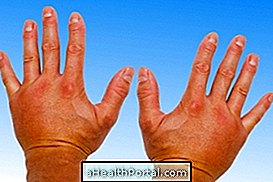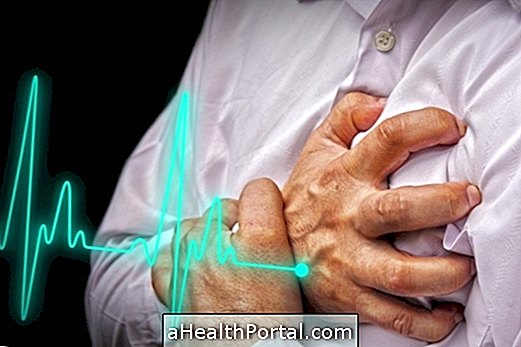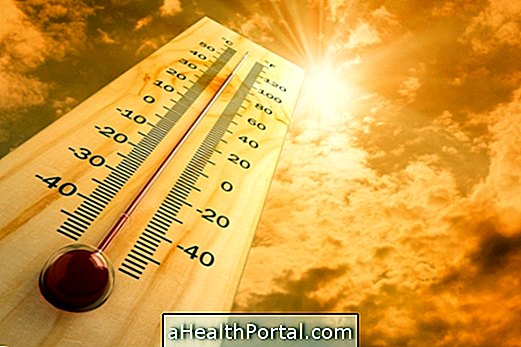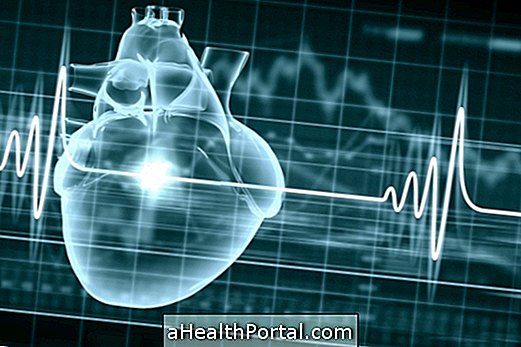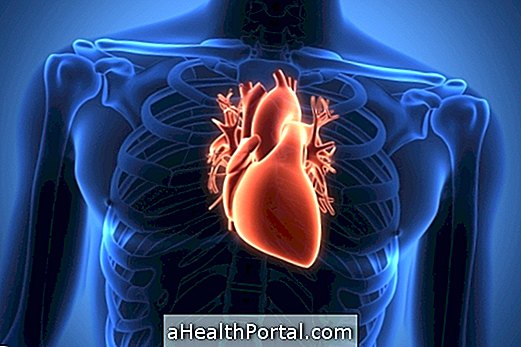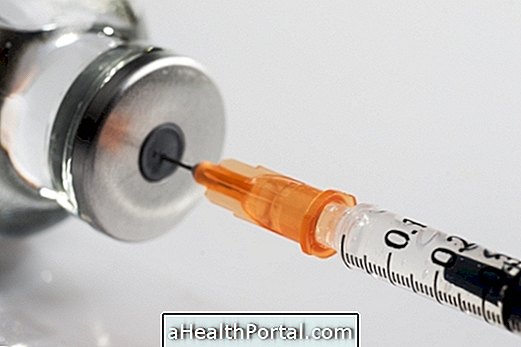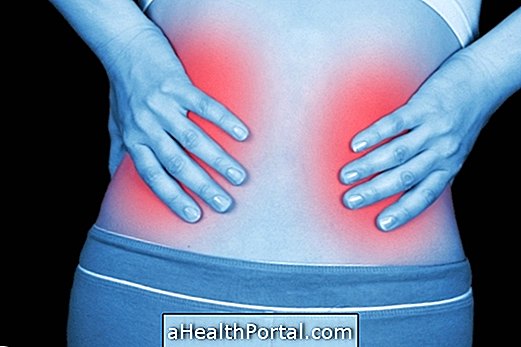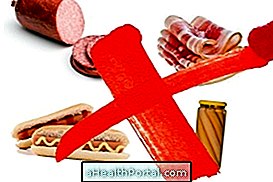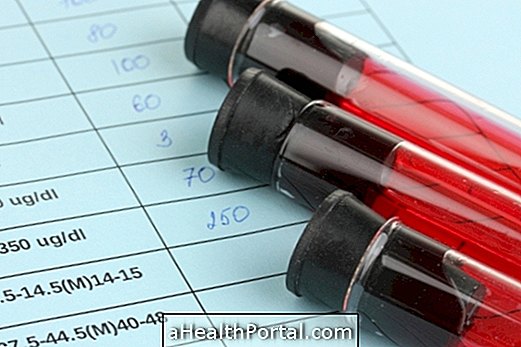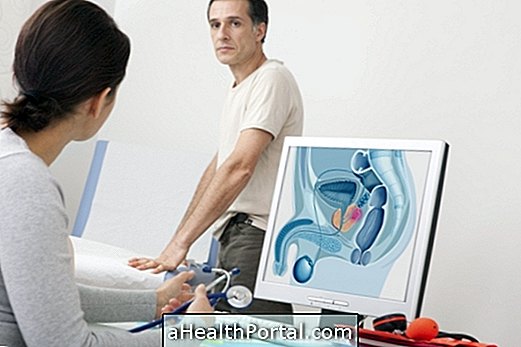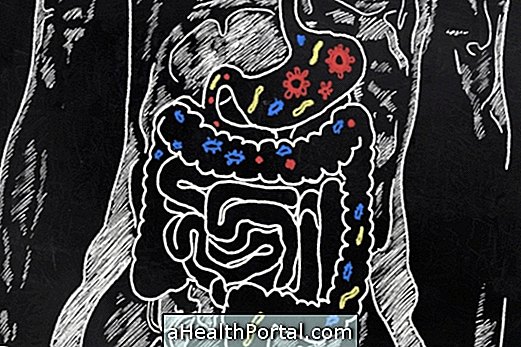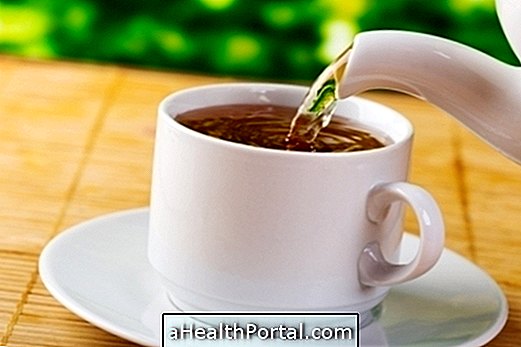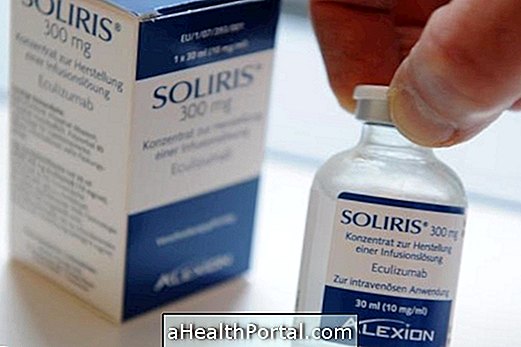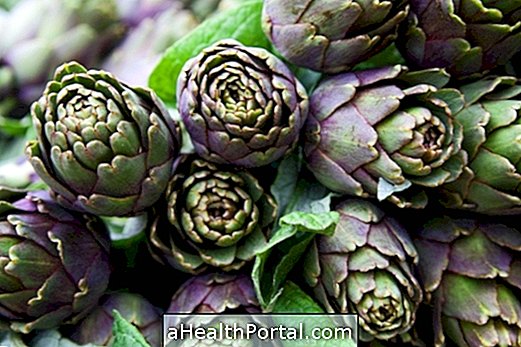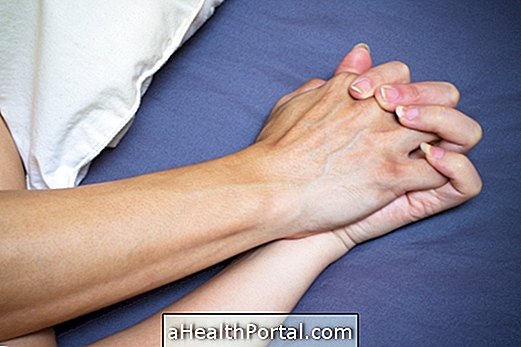Angina pectoris, or angina, corresponds to the feeling of heaviness, pain or tightness in the chest that is usually caused when there is a cardiac ischemia, that is, a decrease in blood flow through the arteries that carry oxygen to the heart. Learn how to identify and treat cardiac ischemia.
Most of the time, cardiac ischemia is caused by the accumulation of fat plaques in the coronary arteries, called atherosclerosis, that are formed throughout the years of life, especially in people with high blood pressure, high cholesterol, or decompensated diabetes. Here are the top 5 causes of atherosclerosis.
These changes happen more in people over 50 and should be treated quickly because they are a major risk for the development of heart attack, cardiac arrest and other cardiovascular diseases such as arrhythmia, heart failure or stroke, for example.
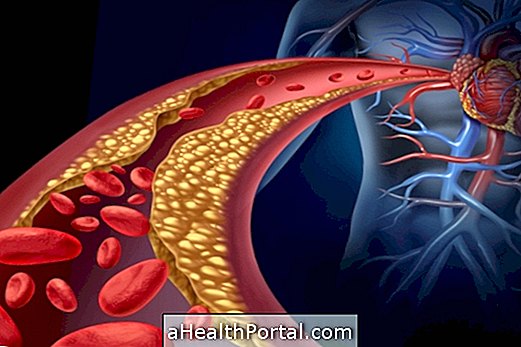
Main types of angina
There are different types of angina, which can vary in the manifestation of symptoms, the main ones being:
1. Stable angina
It is caused by transient ischemia, ie it arises when the person makes some effort or suffers some emotional stress, for example. This type of angina is more common to occur in people who already have some type of partial coronary atherosclerosis, which can worsen and lead to even a heart attack.
Symptoms : Feeling tight or burning in the chest area, which lasts about 5 to 10 minutes, and which can radiate to the shoulder, arm or neck. Generally the symptoms are triggered by stress or times of great emotion, and improve with rest or with medications to dilate the artery and increase blood flow, like Isordil.
Treatment : The treatment for stable angina should be rested or, if directed by the physician, with the use of vasodilator drugs, such as Isosorbide Dinitrate or Mononitrate (Isordil), to improve blood flow in the artery. If the symptoms last longer than 5 to 10 minutes or are accompanied by other symptoms, you should go to the emergency room immediately.
Next, it is important to complement the investigation of the causes and level of coronary obstruction with tests such as exercise testing, for example, in addition to treatment, according to the cardiologist's orientation, of risk factors for the heart, such as high blood pressure, cholesterol and glycemia, in addition to having a diet low in salt, fat, sugars and practicing physical activity. Here's how to diet to have a healthy heart.
2. Unstable angina
It is a more serious condition than stable angina because it is caused by a greater obstruction of the oxygenation of the heart, due to a rupture and inflammation of the plaque of atherosclerosis and, therefore, causes more intense and constant symptoms, being a form of pre- infarction.
Symptoms : Pain, tightness or burning in the chest area that lasts longer than 20 minutes, which also radiates to nearby places and may be associated with other symptoms such as nausea, sweating, and shortness of breath. When these symptoms appear, you should go to the ER immediately. Learn what chest pain may be.
Treatment : The initial treatment is done in the first aid, with medicines to prevent worsening of symptoms, such as:
- Nitrate-like blood-flowing drugs such as Isordil, beta-blockers, such as Metoprolol, or calcium channel blockers such as Verapamil and Morphine, when symptoms are very intense;
- Drugs to decrease clot formation, with the use of antiplatelet drugs such as AAS and Clopidogrel or Prasugrel and Ticlopidine, and anticoagulants such as Heparin.
- Antihypertensive drugs of the ACEI type, such as Captopril, or lipid lowering agents for cholesterol control, such as Atorvastatin.
After the initial treatment, the cardiologist starts to investigate the level of coronary obstruction and cardiac compromise through exams such as echocardiography, cardiac scintigraphy and cardiac catheterization.
In unstable angina, it is also important to treat risk factors, such as blood pressure, cholesterol, blood glucose control, eating habits, and physical activity, which are fundamental to maintaining good coronary and heart health.

3. Prinzmetal's angina or variant
It is caused by coronary spasm, even in people without fat accumulation or other types of narrowing, not having an informed cause.
Symptoms : Severe pain or tightness that occurs even at rest and improves gradually after a few minutes. It is also common to appear during sleep or soon in the morning.
Treatment : The treatment for this type of angina is done under the guidance of a cardiologist and is usually done through the use of nitrate-type drugs or calcium channel blockers, such as Diltiazem and Verapamil, for example to treat the episode of angina or, if the episodes are recurrent, one can make continuous use of this type of medication. The use of ASA and beta-blockers is generally avoided.
How is the diagnosis made?
At the time of the crisis, the diagnosis of angina is made by means of the electrocardiogram, X-ray of the chest and dosage of cardiac enzymes in the blood, to differentiate the main causes of chest pain, such as stable, unstable angina and infarction. Learn how to identify a heart attack.
Other examinations available for further investigation of coronary atherosclerosis and the level of compromised heart oxygenation chosen by the cardiologist are:
- Exercise test or stress test;
- Echocardiography;
- Myocardial scintigraphy;
- Cardiac catheterization.
Cardiac catheterization is a very important test because, in addition to more accurately quantifying blood vessel obstruction and assessing the presence of blood flow alterations, it is able to treat the cause of the obstruction through angioplasty with a a stent or use of a balloon, to open the artery. Find out what it is for and what the risks of cardiac catheterization are.

Angina has a cure
Angina can be cured in people who manage to treat heart ischemia correctly and in a disciplined way. Many cases are well controlled with the use of medications prescribed by the cardiologist, while others are more serious, requiring catheterization or even coronary artery bypass surgery. To learn more about this procedure, see how saphenous vein surgery is done.
Some helpful tips for correctly treating angina include:
- Take medications prescribed by your doctor;
- Quit smoking;
- Adopt a healthy diet;
- Exercise regularly (under professional guidance);
- Avoid overeating and alcoholic beverages;
- Avoid salt and caffeine;
- Keep the pressure under control;
- Avoid stress;
- Avoid very hot or very cold temperatures, as they can also trigger an angina attack.
With these attitudes, in addition to treating angina, it is also possible to avoid worsening or the appearance of new fat plaques in the coronary arteries.
